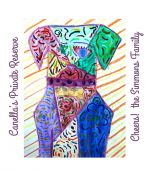
Hi everybody! Happy Spring!
This month I was thinking about corked wine. And, by that, I don’t mean wine that has little pieces of cork floating around in it. Corked wine, also known as cork taint, taint what you want. Nope, it’s considered a wine fault. But people ask me about it on a fairly regular basis so I know not everyone recognizes what it is. Let me explain.
When you see someone sniffing a freshly pulled cork one of the things they are checking is if the cork smells ok. And if they make a face and quickly bring out another bottle you can safely assume it didn’t. It’s a funky smell that’s a little hard to describe, but it can remind you of damp moldy cardboard, or, a pile of wet newspapers, or, as one British chap said, a damp tweed jacket. Or Grandma’s basement. Maybe even Grandma if she’s been down there too long. And the smell may be more or less pronounced as in the face contorting “eww!” level to the barely discernible. Or, maybe even not at all on the cork, but, there it is in the wine.
Now you can drink a whole bottle of corked wine and it won’t hurt you. It just won’t taste very good. It might taste flat. If it’s a wine you are familiar with, you might notice a lack of fruitiness or freshness that you were expecting because cork taint really decreases the fruit in the wine. Most of all, for me, it’s hard to get past the smell. Even if it’s not very corked, I get that unpleasant smell rising in the back of my throat as part of the retro nasal thing that helps us to taste stuff. We sometimes get a corked bottle at the winery, and, if you are interested, ask us if we have one around that you can smell. You really have to experience this smell a time or two to get it. And you won’t want it!
So what causes this, you may ask. And I would say, 2,4,6- trichloroanisole. Or, really, I would say, TCA, because I have trouble getting that other word out of my mouth. TCA is a chemical compound created when chlorine, that is used to clean and sanitize the corks, meets this particular airborne fungus. The fungus might come from the raw cork itself, or can, and this is bad, get into a production facility. It can live in wooden beams or walls or barrels or rubber hoses. Then a major overhaul has to be done to get rid of it. The good thing is that chlorine has been mostly phased out of use these days replaced by peroxide and other sanitizers. So the problem is decreasing.
Here’s a weird thing I just read about. You can try this if you find yourself with a corked bottle of wine and no easy replacement. Pour the wine into a bowl or decanter that has a sheet of plastic wrap in it. It is supposed to attract the TCA to it almost instantly and your wine should taste, if not perfect I suppose, better without the corked issue. I don’t know if this works, but I’m going to try it! Let me know what you think if you do!
Back to the topic on hand…TCA can only occur in natural cork. And that is part of the incentive to create and use other closures for wine bottles. But cork is the most sustainable closure with the smallest carbon footprint around. It is also the best kind of closure for aging fine wines due to the minuscule but important micro oxygenation that occurs in the bottle.
Allow me to segue into a little cork history if you don’t mind. It’s interesting! Corks come from cork oak trees (Quercus suber) that are native to southwest Europe and northwest Africa. In the Mediterranean basin the tree is an ancient species. And Portugal, located in this area, is the center of the world’s cork production. In fact, the cork oak is its national tree. These trees are prized and regulated as to how they are treated in order to prosper and stay healthy. A cork tree can only be harvested of its bark (only so much can be taken according to a formula having to do with the size of the tree) every nine years. The trees live 150 to 200 years making for an average of 15 harvests per tree. And it’s only on the third harvest that the cork reaches the quality that can be used for wine bottles. The men who work the trees usually come from generations of cork harvesters. They love these trees!
So even though there is always going to be a certain small percentage of corked wine in the world, I still think corks are the way to go for age worthy wines. Yep, that’s what I think.
Cheers and ciao for now!
~ Peggy












0 Comments